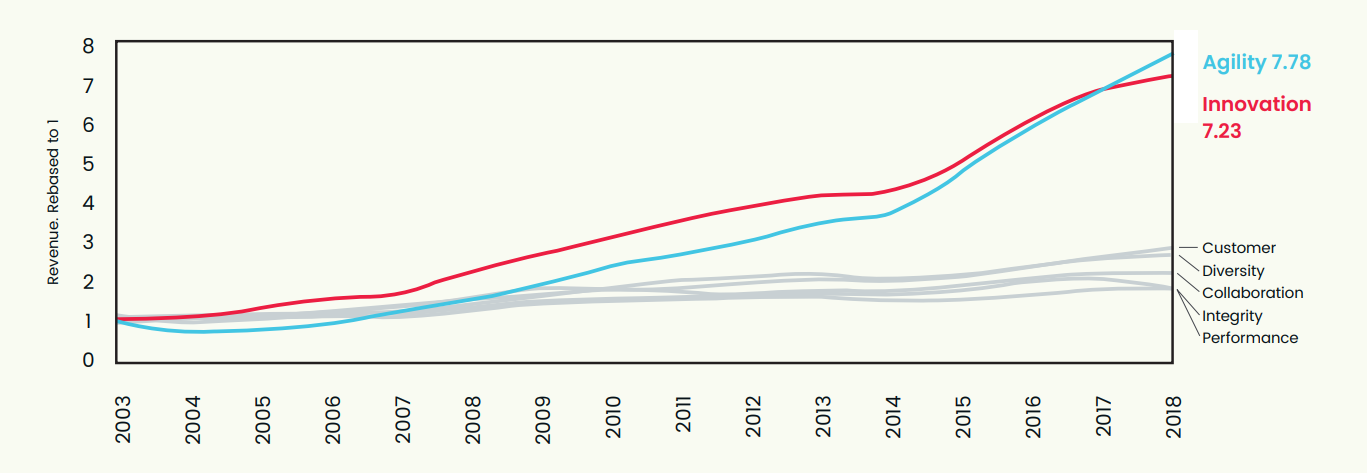Innovation in business: A strategic imperative
Innovation in business to drive growth is a high-stakes game, with more losers than winners. But it’s also a challenge that every business must take on. Creating the right culture for building successful new propositions can put your business in the 30% that get innovation right.

It’s no secret that innovation in business is a necessity for long-term relevance. Against a constant barrage of new regulations, technological change, sector disruption and ever-evolving customer needs, today’s companies must work harder just to keep pace. New business models and proposition development have become a strategic imperative for business survival.
Yet, while 84% of CEOs believe innovation is critical to growth, just 6% of them are satisfied with their innovation performance. The reason is simple: Innovation may be vital, but it’s hard to get right. It’s inherently risky and expensive. In fact, seven out of ten new business models, product and service innovations are destined to fail.
Setbacks sap confidence and lead to cost saving, reducing the budget for future bold moves. Inertia sets in. Stagnation or decline can result when businesses are put off by the risk and expense of investment into innovation – even though an innovative culture is disproportionately a driver of revenue growth over the long term. Companies find themselves in a doom-loop of consolidation which ultimately leads to downfall.
But it's not all bad news. A strategic imperative to drive innovation creates winners too. Those players who develop the right culture and support for innovation will cash in over the long term.
What are the 30 % doing right?
The glass-half-full CEO will look at the statistics around innovation and surmise that they have a three-in-ten chance of developing an effective new growth engine. By championing an innovative culture, built on agility and honesty, those odds will shift in their favour.
Cognosis carried out a extensive research that correlated long-term revenue (over a 15 year period) and ROIC performance of large, listed businesses with organisational culture. Agility and innovation stood apart as the biggest cultural drivers of revenue growth.
AVERAGE REVENUE OVER TIME - Segmented by their priority 'Cultural Value'

Hold the aces in propositon development
When developing new growth engines, businesses need to mitigate certain pitfalls that can lead to misfire. By embracing experimentation, learning from failure, and maintaining a data-driven approach, businesses can navigate the innovation landscape with confidence, turning disruption into opportunity. They can respond to changing customer needs with more speed and precision than the competition.
Every proposition development process will have nuance. But as a starting point we base ours from the following tried-and-tested approach which splits the development process into three distinct phases:
1. Understand & Assess
Develop a draft proposition canvas built on sound customer insight to drive fast stakeholder alignment. Then, conduct a comprehensive assessment against benchmarks to critically evaluate the desirability, viability and feasibility of the proposition using rigorous commercial modelling and in-depth capability audits.
2. Build & Test
Once initial consensus has been reached, detailed proposition design commences. This involves testing and refining the proposition in response to new insights surfaced throughout the process, culminating into challenging and transparent 'Go/No-Go' sessions in which the green light for launch is either given, or not.
3. Prepare for launch
If the new product/service/business model survives the rigorous challenge and testing process and is deemed worthy of investment, go-to-market (GTM) planning is initiated. A clear GTM framework and launch objectives and key results (OKRs) will help hardwire the principles of implementation success within business operations.
No longer a choice, but a necessity
Innovation is a strategic imperative – and value proposition development (when done right) is a key enabler for innovation success. Importantly, the creation of new growth engines is not a one-time event but rather an ongoing process that requires a relentless pursuit of progress.
Simply, the more you do it, the better you get. And while it’s true that many succumb to the pitfalls of innovation, those who can master the art of developing new business models, products, and services can reap substantial rewards.
> RELATED ARTICLE: The art of creating new value with proposition development


